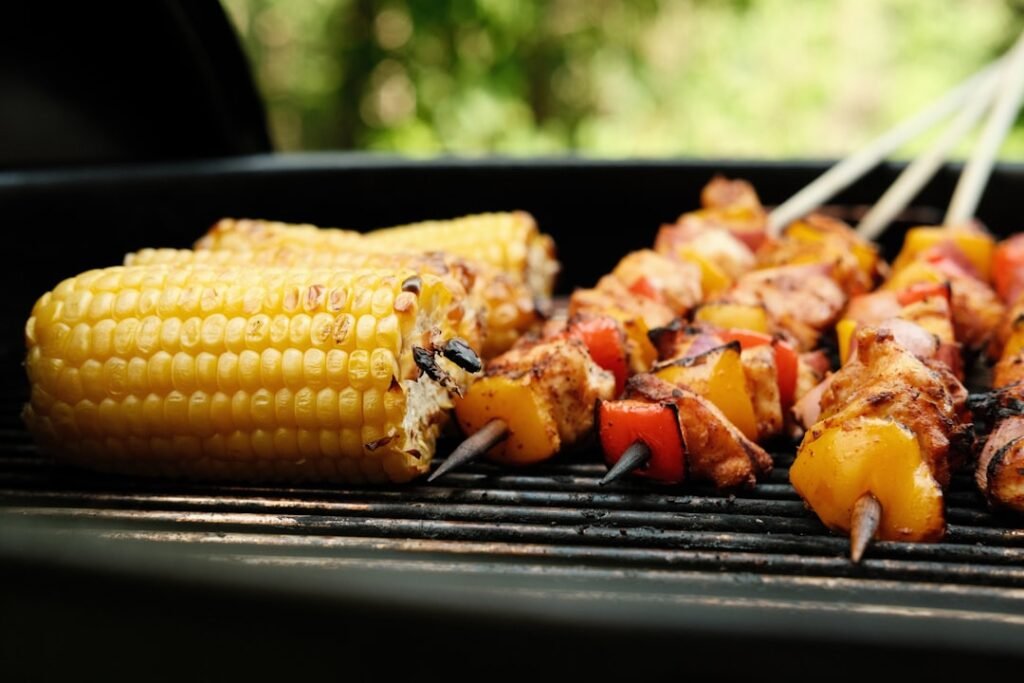Crafting the Ultimate BBQ Sauce: A Step-by-Step Guide

When I think about BBQ sauce, I am reminded of the rich tapestry of flavors that can transform a simple meal into a culinary experience. At its core, BBQ sauce is a condiment that enhances the taste of grilled or smoked meats, but it is so much more than just a topping. The origins of BBQ sauce can be traced back to various cultures, each contributing their unique twist to the blend of ingredients.
From the tangy vinegar-based sauces of the Carolinas to the thick, sweet tomato-based varieties found in Kansas City, understanding these foundational styles helps me appreciate the versatility and depth of BBQ sauce. The basic components of BBQ sauce typically include a base, sweeteners, acidity, and spices. The base can be tomato, vinegar, mustard, or even fruit juices, each offering a distinct flavor profile.
Sweeteners like brown sugar, honey, or molasses add depth and balance to the sauce, while acidic elements such as vinegar or citrus juice provide brightness and cut through the richness of the meat. Spices and seasonings are where I can truly express my creativity, as they can range from simple salt and pepper to complex blends of paprika, garlic powder, and cayenne pepper. Understanding these elements allows me to craft a BBQ sauce that not only complements my dishes but also reflects my personal taste.
Selecting the Right Ingredients for Your BBQ Sauce
Choosing the right ingredients for my BBQ sauce is a crucial step in the process. I often start with a high-quality base, as it sets the foundation for the entire sauce. If I opt for a tomato base, I prefer using crushed tomatoes or tomato paste for a rich texture.
For a vinegar-based sauce, I look for apple cider vinegar or white vinegar, which provide a sharp tang that can elevate the overall flavor. The quality of these ingredients can significantly impact the final product, so I make it a point to select fresh and organic options whenever possible. Sweeteners are another essential component that I pay close attention to.
While brown sugar is a classic choice, I sometimes experiment with alternatives like maple syrup or agave nectar for a unique twist. These sweeteners not only add sweetness but also contribute their own distinct flavors. Additionally, I consider incorporating fresh herbs or spices into my sauce.
Fresh garlic or onion can add depth, while herbs like thyme or rosemary can introduce an aromatic quality that enhances the overall experience. By carefully selecting each ingredient, I ensure that my BBQ sauce is not only delicious but also reflective of my culinary style.
Balancing Sweet, Tangy, and Spicy Flavors

Achieving the perfect balance of sweet, tangy, and spicy flavors in my BBQ sauce is an art form that requires practice and intuition. I often start by determining the primary flavor profile I want to achieve. If I’m leaning towards a sweeter sauce, I might increase the amount of brown sugar or honey while ensuring that I still incorporate enough acidity to prevent it from becoming cloying.
On the other hand, if I want a tangier sauce, I might focus on adding more vinegar or citrus juice to brighten up the flavors. Spiciness is another element that I love to play with in my BBQ sauce. Depending on my mood or the dish I’m preparing, I might add a pinch of cayenne pepper for heat or incorporate diced jalapeños for a fresh kick.
It’s essential for me to taste as I go along, adjusting the ingredients until I find that harmonious blend that excites my palate. This balancing act is what makes each batch of BBQ sauce unique; no two sauces are ever exactly alike, and that’s part of the joy of creating my own.
The Art of Cooking and Simmering Your BBQ Sauce
| Technique | Benefits |
|---|---|
| Cooking BBQ Sauce | Enhances flavor and thickens the sauce |
| Simmering | Allows flavors to meld and intensify |
| Temperature | Low heat prevents burning and promotes even cooking |
| Time | Longer cooking time deepens the flavor profile |
Once I’ve crafted my BBQ sauce recipe, the next step is cooking and simmering it to develop its flavors fully. This process is where the magic happens; as the ingredients meld together over low heat, they create a symphony of tastes that can elevate any dish. I typically start by sautéing any aromatics like onions or garlic in a bit of oil before adding my base ingredients.
This initial step allows me to build a flavor foundation that will enhance the overall complexity of the sauce. Simmering is crucial for allowing the flavors to deepen and mature. I usually let my sauce simmer for at least 30 minutes, stirring occasionally to prevent sticking and ensure even cooking.
During this time, I take the opportunity to taste and adjust seasoning as needed. If I find that it needs more sweetness or acidity, I can easily add those elements while it’s simmering. The longer I let it cook, the more integrated the flavors become, resulting in a rich and cohesive BBQ sauce that I’m proud to serve.
Adding Special Touches and Unique Flavors
One of the most exciting aspects of making BBQ sauce is the opportunity to add special touches and unique flavors that set my sauce apart from others. This is where I can truly let my creativity shine. For instance, I might incorporate smoked paprika for an added depth of flavor reminiscent of traditional barbecue pits or even experiment with fruit purees like peach or pineapple for a sweet twist.
These additions not only enhance the taste but also create an intriguing complexity that keeps people coming back for more. I also enjoy exploring global influences in my BBQ sauce creations. For example, adding soy sauce or sesame oil can introduce an Asian flair, while incorporating chipotle peppers in adobo sauce can lend a smoky heat reminiscent of Mexican cuisine.
By thinking outside the box and embracing diverse flavor profiles, I can create BBQ sauces that are not only delicious but also tell a story about my culinary journey.
Storing and Preserving Your Homemade BBQ Sauce

After putting in all that effort to create my homemade BBQ sauce, it’s essential to store it properly to maintain its freshness and flavor. I typically transfer my cooled sauce into clean glass jars or airtight containers before placing them in the refrigerator. When stored correctly, my BBQ sauce can last for several weeks—though it rarely lasts that long in my household!
The flavors often continue to develop even after cooking, making it even more delicious over time. For longer-term storage, I’ve found that freezing my BBQ sauce is an excellent option. By pouring it into ice cube trays or freezer-safe bags, I can easily portion out what I need for future meals without worrying about waste.
When I’m ready to use it again, all I have to do is thaw it in the refrigerator overnight or warm it gently on the stovetop. This method not only preserves the quality of my homemade sauce but also allows me to enjoy my culinary creations long after they’ve been made.
Experimenting with Different BBQ Sauce Variations
One of the most enjoyable aspects of making BBQ sauce is experimenting with different variations to suit various occasions and preferences. Whether I’m hosting a summer cookout or preparing a cozy family dinner, I love tailoring my sauces to match the mood and menu. For instance, during warmer months, I might lean towards lighter sauces with citrus notes that complement grilled seafood or chicken beautifully.
Conversely, when fall rolls around and comfort food cravings set in, I often gravitate toward heartier sauces with robust flavors that pair well with smoked meats like brisket or ribs. This experimentation allows me to explore new flavor combinations and techniques while keeping my cooking fresh and exciting. Each variation becomes an opportunity to learn more about flavor profiles and how they interact with different types of meat and cooking methods.
Tips for Pairing Your BBQ Sauce with Different Meats and Dishes
Pairing my homemade BBQ sauce with different meats and dishes is an essential skill that enhances my culinary repertoire. Each type of meat has its unique characteristics that can be complemented by specific flavor profiles in BBQ sauces. For example, when I’m grilling chicken, I often opt for a tangy vinegar-based sauce that cuts through the richness of the meat while adding brightness.
On the other hand, when I’m preparing ribs or brisket, a thicker tomato-based sauce with a hint of sweetness works wonders in balancing out their smoky flavors. I also enjoy experimenting with non-meat dishes by using BBQ sauce as a marinade or glaze for vegetables or tofu. Grilled corn on the cob brushed with BBQ sauce becomes an irresistible side dish at summer gatherings, while roasted vegetables take on a new life when tossed in a flavorful glaze before cooking.
By thinking creatively about how to pair my sauces with various dishes, I can elevate any meal into something truly special. In conclusion, crafting homemade BBQ sauce is an art form that combines understanding basic principles with creativity and experimentation. From selecting quality ingredients to balancing flavors and exploring unique variations, each step allows me to express my culinary style while enhancing my meals.
Whether I’m grilling for friends or enjoying a quiet dinner at home, having a delicious homemade BBQ sauce on hand makes every dish feel like a celebration.





